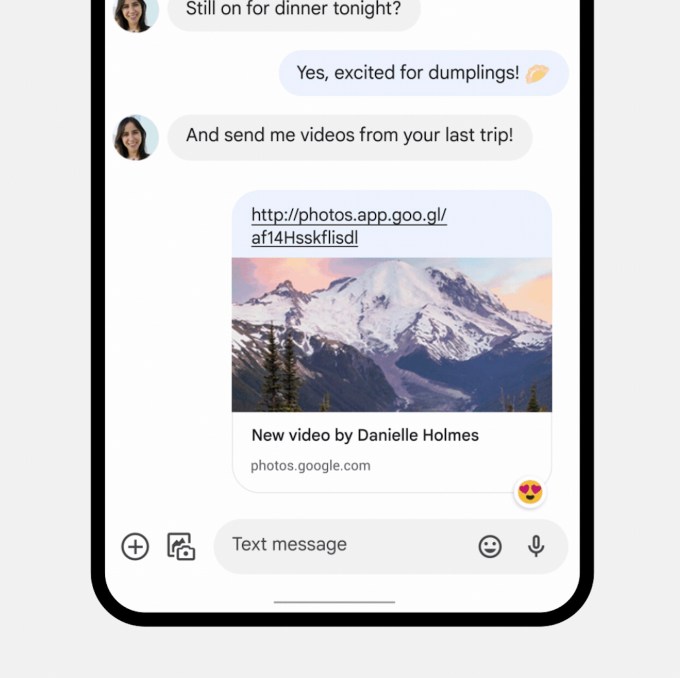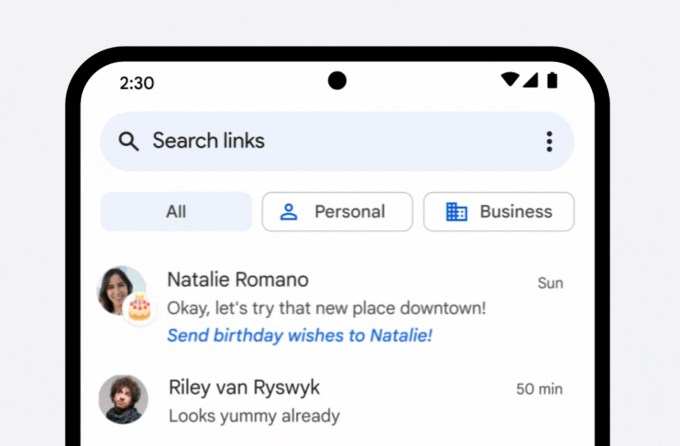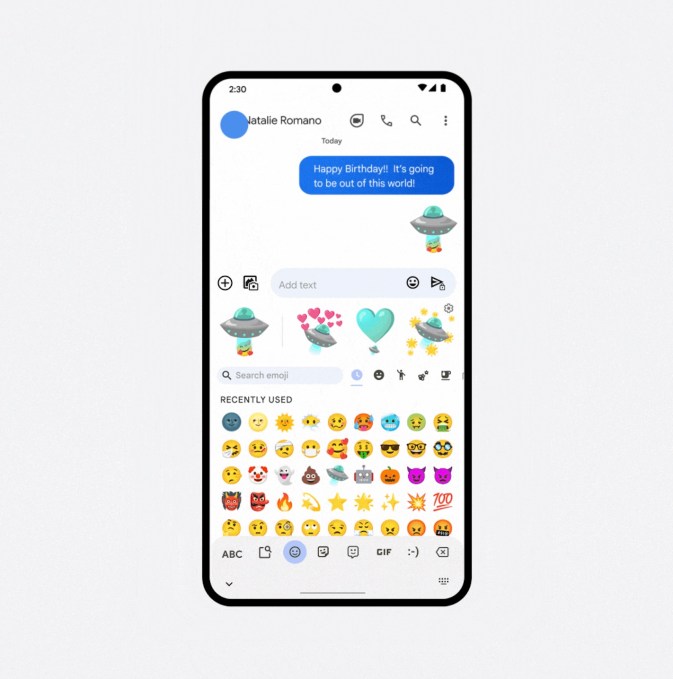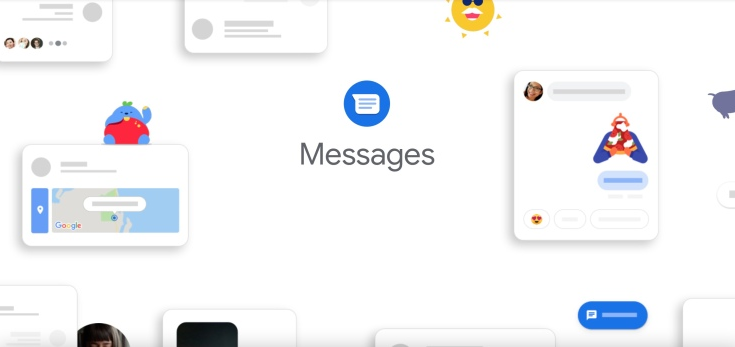Google is giving its default messaging app a big upgrade, the company announced today. The Messages app, which comes pre-installed on most Android phones, will gain a number of new features with the update. Most notably, it will address the long-standing issue where iMessage’s “Tapbacks” weren’t delivered as emoji reactions, but were rather sent as a separate message. It’s an annoyance that’s made chats between Android and iPhone users confusing, cluttered and far too noisy.
Other coming updates include nudges to remind you to reply to messages you missed, separate tabs for business and personal messages, reminders about birthdays you may want to celebrate, support for sharper videos via a Google Photos integration and an expanded set of emoji mashups, among other things.
After the update, reactions from iPhone users will be sent as an emoji on text messages on Android. As on iMessage, the emoji reaction — like love, laughter, confusion or excitement — will appear on the right side of the message. (On Android, it’s the bottom right.) This feature is first rolling out to Android devices set to English, but additional languages will follow.

Image Credits: Google
These improved reactions were already available to beta users of the Messages app, but Google had not yet said when they will become available to the public. Testers had noted that Android’s interpretation of which emoji to use varies slightly from iPhone, however. For instance, the “heart” reaction on Android becomes the “face with the heart eyes” emoji. And the iMessage’s exclamation mark reaction becomes the “face with the open mouth” emoji.
Google is also integrating Google Photos into the Message app to improve the video sharing experience. While the modern RCS standard allows people with Android devices to share high-quality videos with each other, those same videos appear blurry when shared with those on iPhone, as iMessage doesn’t support RCS. By sending the link to the video through Google Photos, iPhone users will be able to watch the video in the same high resolution. This feature will later include support for photos, too.
This addition aims to push Apple to adopt the industry standard by shaming the company over video quality.
Google thus far has been very vocal about Apple’s decision to avoid supporting RCS — largely because RCS adoption would allow Google to better compete with Apple’s iMessage. But Google is not wrong when it points out that Apple is not serving its own customers very well by having iMessage fall back to the older standard of SMS, which is less secure. (An odd choice for a privacy-focused company like Apple claims to be.)
The lack of support also leads to all sorts of inconsistencies when messaging. For instance, when texting another iPhone user, iMessage users can see typing indicators, use read receipts and view high-resolution media. Those features would work when communicating with Android users if iMessage supported RCS, but Apple has chosen not to, which leads to a poor experience for its own customers.
Apple, to some extent, benefits by making SMS the “worse” experience, as this can help with ecosystem lock-in. But critics argue that decisions like this have led to iMessage failing as a global messaging champion; users worldwide have turned instead to third-party messaging apps — like WeChat, Messenger, Telegram and WhatsApp — in part because Apple chose not to compete on Android, or even keep up with the baseline features for modern-day messaging.
Meanwhile, Google Messages’ upgrade is raising the bar when it comes to how a default messaging app could work, at least in terms of consumer convenience — though in Google’s case, more efforts need to be made to protect user privacy. Still, it’s good to see steady improvements to just one app, instead of the rollout of yet another — as had been the case with the company’s scatterbrained messaging strategy in previous years.

Image Credits: Google
In addition to the above fixes, which are focused on solving problems related to Apple’s continued use of SMS, Messages will also now automatically sort messages into Personal and Business tabs in the app, so you can more easily find the messages you need. Plus, to reduce the clutter, you can set it so one-time password messages will automatically disappear after 24 hours. This feature was available already in India and is now coming to the U.S.
The app will also help you maintain your relationships better, by nudging you if you forgot to respond to a text or reminding you if it’s your friend’s birthday. (It will only know this if you’ve saved their birthday info in your contacts app.) The nudges will first roll out to English users worldwide.
YouTube links sent through Messages will now include a preview of the video right in the conversation.
Finally, Google updated its Emoji Kitchen feature in its Gboard keyboard, which allows you to combine two different emoji to make your own. Now, this selection is bigger with over 2,000 new mashups available as stickers. Gboard’s on-device Grammar Correction feature is also arriving for all of Android, after having first launched on Pixel devices.

Image Credits: Google
The new Messages app features are one of the highlights across a number of other Google product updates rolling out today, including improvements to Android widgets, Google TV, Google Photos, Nearby Share, Android Auto, Accessibility features and more.



